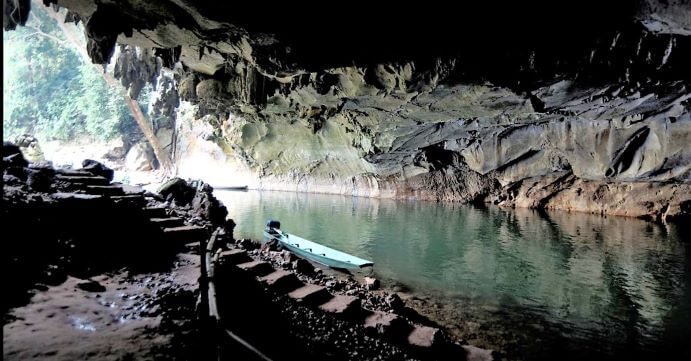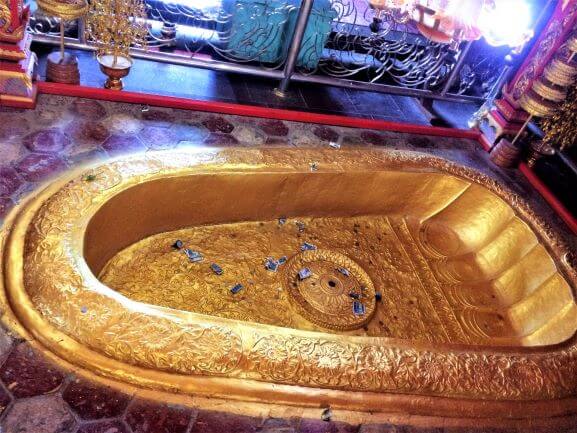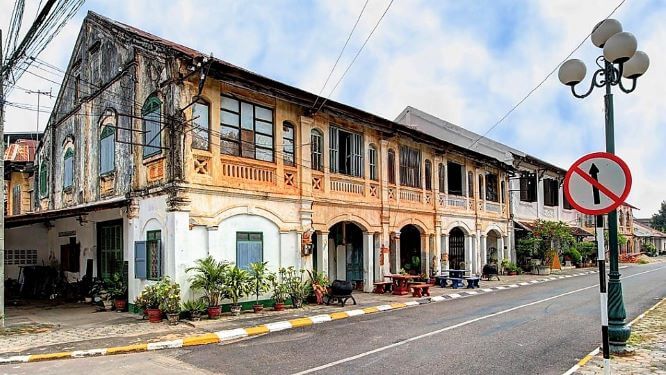LAOS FULL CIRCUIT TOURS
10 DAYS
OVERVIEW
Laos
ITINERARY
OPTION 1
10 days tours Laos from Chiang Rai (Thailand) to Houeixai – Pakbeng
Day 1: Houeixai – Pakbeng (River) On arrival at HoueiSay in Laos from Chiang Khong (Thailand), we embark on our traditional boat cruising downriver on the Mekong. This part of the Mekong River is quite narrow and both banks of the rivers are bordered by amazing scenery of beautiful green forests and towering hills. The pace is very relaxed as we drift along the river in our boat, a perfect way to observe rural life close up. Along the way, we stop over at Ban Houeilampen to visit the Hmong hilltribe people. They are very poor, but have a vibrant culture and an interesting history, overnight in Pakbeng
Day 2: (B, L)Pakbeng – Pak Ou Caves – Luang Prabang Full breakfast, (Optional: walk to Pakbeng market, where people from the surrounding minority villages exchange their goods). At 08:30 board the boat for the second leg of the cruise. We take a short stop to discover Hmong village before having your lunch on board. Continue to Pak-Ou village at the mouth of the Nam Ou River, and then visit Pak Ou Caves “Cave of a thousand Buddha’s”. On the way to Luang Prabang a brief stop is made to observe the traditional process of manufacturing local rice alcohol. Arrive at Luang Prabang before sunset. Overnight in Luang Prabang
Day 3: (B) Luang Prabang – City Tours Early start gives you the fantastic opportunity to participate in the daily morning rituals of saffron-clad monks collecting offerings of Alms (ubiquitous sticky rice) from the faithful residents. This tradition is very unique in Laos, being the only Buddhist nation still preserving the procession. Back to hotel for breakfast and we visit the morning Phousi Market, where you will see such diverse offerings as dried buffalo skin, local tea and saltpeter among the chickens, vegetables and hill-tribe weavings. Laos is also known for its traditional crafts, and today you will visit local villages of Lao ethnic minority groups at Ban Ouay, a Hmong village, Ban Ou a Laoloum village and Ban Thapene, a Khmu village. This then takes us to the beautiful Khuang Si Waterfall where you can cool off with a refreshing swim in the pools or walk along the forest trails. We then return to Luang Prabang. From there, we explore the Night Market, where you can find a lovely selection of handmade textile made by local and hill tribe people surrounding Luang Prabang. Overnight in Luang Prabang
Day 4: Luang Prabang – Xiengkhouang (Road) After breakfast, we visit the National Museum (close Tuesday) at the former Royal Palace, which displays a lovely collection of artefacts reflecting the richness of Lao culture dating from the days of the early kings right through the last sovereign. Today, we drive 306km uphill a mountain surrounded by wonderful natural scenery to Xiengkhouang. Upon arrival, we transfer out to visit the Plain of Jars, an impressive archaeological site where hundreds of large stone jars are scattered all over the plateau. If time permits, we see the old capital of Muang Khoun and the nearby villages, home to the Hmong hill tribe people. They have an interesting local culture and a colorful history. Overnight in Phonsavanh (B)
Day 5: (B)Xiengkhouang – Vientiane (Flight) Following breakfast, we visit the Central Market. After you will have free time to explore the town further before catching our flight back to Vientiane. After checking into the hotel, time permiting we continue our sightseeing tour of the surrounding areas of Vientiane; we visit the impressive Lao-Thai Friendship Bridge and Buddha Park, an enchanting collection of Buddhist and Hindu sculptures on the Mekong Riverside meadow, close to the Friendship Bridge. There are approximately 200 religious images dating back over 500 years, which were created by a mysterious monk spreading his philosophy on life and revealing his ideas about the universe. A spectacular view of the Mekong River at sunset is a perfect way to finish the day. Overnight in Vientiane
Day 6: (B) Vientiane – City Tours After breakfast, we continue to explore Vientiane capital by visiting the major sights of the capital; including the oldest Wat Sisaket with thousands of miniature Buddha statues and the former royal temple of Wat Prakeo, which previously housed the famous Emerald Buddha Image. . Enroute to Lao’s national precious heritage, the famous and sacred structure of That Luang Stupa, you will have the opportunity to take some pictures of the imposing Patuxay Monument, which is well known as Vientiane’s own Arc de Triumph. In the afternoon, we continue visiting the rest of Vientiane by foot, including Wat Ong Tue, Wat Inpeng and Wat Haisok. We pass by the major shopping area continuing to the Vientiane Central Market of Talad Sao and Talad Kouadin where various goods are displayed for sale; including fresh food, household goods, souvenirs, textiles, gold, silver and antiques. We return to the Mekong Riverside in the late afternoon for observing the sunset. Overnight in Vientiane.
Day 7: (B)Vientiane – Pakse – Don Khone Island (Flight) After breakfast, we catch an early flight to Pakse. On arrival, we drive south to Champassak and tvisit the fascinating pre-angkorian ruins of Wat Phu, one of Southeast Asia’s most dramatically situated temples. We have time to explore these intriguing Khmer ruins, which are perched at the base of Mount Phu Kao. We continue our journey by road and ferryl boat to Don Khong, the largest island in the South Mekong river region known as the 4000 islands, one of the most scenic areas in Laos. Overnight on Don Khong Island
Day 8. (B)Don Khone Island – Surrounding (Boat) After an early morning breakfast, we begin by re-tracing the French colonial-past at Ban Khone, where some old colonial houses still stand and glimpse the first Lao railway with its own locomotive. We continue our exploration of the area of the 4000 islands leisurely by boat and visit the most beautiful Liphi waterfall, also known as the Samphamith, which forms a natural border between Lao and Cambodia. If we have luck, we may catch a glimpse of the rare freshwater Irrawaddy Mekong dolphin at Ban Hang Khone. We return to Ban Nakasang and drive to the famous waterfall of Khone Phapeng – the largest waterfall in South East Asia, also known as the ‘Niagara of the east’. Overnight on Don Khong Island
Day 9: (B) Don Khone Island – Tadlo – Pakse Upon leaving Done Khone Island, we journey towards Tadlo, through the Boloven plateau. The Boloven Plateau is known for its cooler temperature being located high above the Mekong Valley. Rivers run off this high plateau in all directions and then plunge out to lush forests along in a series of spectacular surging waterfalls. A trip to the plateau provides a refreshing break from the heat and allows you to observe the cultivation of rich coffee, tea, cardamom, bananas, and other crops that can be seen en route. This trip gives visitors the chance to venture off the beaten track and to discover some of the lesser-known areas of Laos, exploring the wild beauty of this southern region. Upon arrival at Tad Lo waterfall, we visit the villages of Alak, Nge, and Katu, populated by ethnic minority groups. We return to Pakse by late evening. Overnight in Pakse
Day 10: (B) Pakse – Departure After breakfast; there will be free time for your own exploration of Pakse Town before catching a flight to Siem Reap-Cambodia or exiting Laos overland from the Chongmek International checkpoint to Ubon Ratchathani Thailand.
OPTION 2
Day 1. Arrival – Vientiane On arrival in Vientiane, you will be met and transferred to your hotel. Time permitting, your half day city tour enables us to see the major temples of Vientiane including the oldest, Wat Sisaket, a temple of thousands of miniature Buddha statues, and the former royal temple of Wat Prakeo, which previously housed the famous Emerald Buddha Image. We also visit Lao national icon, That Luang Stupa, and we stop to take some pictures of the imposing Patuxay Monument, which is Vientiane’s own Arc de Triumph. Overnight in Vientiane
Day 2: Vientiane – Prabaht Ponsan – Sala Hin Boun You will be picked up from your Vientiane Hotel this morning, and travel south along route 13. En route we stop at Prabaht Ponsan, an Ancientstupa dating back to the 15th Century. It is also home to the AncientBudhhas footprint, discovered in 1933, and now an important religious site in Laos. Following lunch we continue onwards into Khammoune province and into the mountainous area, where a stop at a view point near Khoun Khamoffers a breathtaking view over the surrounding area. We eventually reach Ban Naphouak and continue driving to Sala Hinoun by passing some stunning limestone karst scenery, as well as a number of villages with smiling waving children. We reach your accommodation for the night Sala Hin Boun, late afternoon. You have the rest of the day at leisure. Overnight at Sala Hin Boun (B, L)
Day 3: Sala Hin Boun – Kong Lor Cave After breakfast at Sala Hin Boun we continue by boat upriver to Kong Lor village, where you have the chance to explore, before boarding a smaller boat into the famous Kong Lor Cave. We navigate through the cave, which is over 7km long and includes a spectacular cavern over 100m high, following lunch in a remote village on the other side of the cave. We return to Sala Hin Boun before sunset. Overnight at Sala Hin Boun (B, L)
Day 4: Sala Hin Boun – Thakek Following breakfast we set off by road to Naphouak, before heading south by boat through some of the most spectacular gorges found in Southeast Asia. Along the way we make a stop for lunch and a picturesque Lao Loum village, and then we are picked up by car and transferred to Thakek by late afternoon. Overnight in Thakek (B, L)
Day 5: Thakek – Buddha Cave We depart Thakhek by Tuk-tuk, and follow the old French railway track that was destined for Vietnam but was never finished. Continuing through impressive scenery, you arrive in the village of Ban Nakhang Xang and meet the village guides who will escort you on your trek. Passing through secondary forest your guide will point out forest products that form an important part of local people’s food resources. Going through a cave, you enter a striking valley with towering cliffs and forest. The trail follows the shoreline of Nong Thao Lake where you can see local fishermen at work. On arrival at Tham Nong Paseum cave more adventurous swimmers can explore the cave. The cave is 400 metres long and contains dramatic stalactites and stalagmites. Back in daylight, the trip continues onto Khammouane’s famous Buddha cave for a traditional Lao lunch of Mekong fish, sticky rice and spicy papaya salad. After lunch we visit Tham Pa Fa or Buddha cave, which was rediscovered in April 2004. The cave contains 229 bronze Buddhas that are said to be over 300 years old! Time permitting you will also be able to travel by local canoe into the water cave below. Your guide will now escort you back to the village following a different route through the forest, and you will return to Thakek in the late afternoon. Overnight in Thakek (B,L)
Day 6: Thakek – Savannakhet – Pakse This morning we are back on the road heading south to Thakek. En route we stop to visit the town of Savannakhet, famous for its French Colonial buildings and also the sacred stupa of That Inhang. We have ample time to explore the town before reaching Pakse in the early evening. Overnight in Pakse (B)
Day 7: Pakse – Tadlo This morning you will be met and taken by road west into the Bolevean Plateau. The Bolevean Plateau is known for its cooler temperature being located high above the Mekong Valley. The area is famous for its many waterfalls, and the most beautiful of these falls, Tad Fan, we visit. Tad Fan waterfall is spectacular with twin waterfalls plummeting into a deep gorge surrounded by flourishing vegetation. A trip to the plateau provides a refreshing break from the heat and allows you to observe the cultivation of rich coffee, tea, cardamom, bananas, and other crops that can be seen en route. In the afternoon we arrive at Tad Lo, home to another scenic waterfall and numerous ethnic minority groups. We visit the villages of Alak, Nge, and Katu before overnighting in Tad Lo. Overnight in Tad Lo (B)
Day 8: Tadlo – Pakse – Wat Phou – Don Daeng After an early breakfast, we head out towards Khong Island. On the way we make a short detour to visit Pha Suam waterfall and to explore the ethnic minority villages of Lao Teung. We continue to travel by road via Pakse town crossing the Mekong by ferry to visit the fascinating pre-Angkorian ruins of Wat Phu, one of Southeast Asia’s most dramatically situated temples. Following lunch we continue our journey by car and ferry to Don Daeng Island. Overnight on Don Daeng (B)
Day 9: Don Daeng – 4000 Islands and surrounding Following breakfast, we enjoy a visit to the surrounding countryside, and embark on a long tail boat tour of the Don Khone area, which takes you to visit the remains of the French period and Liphi Waterfall or “the Corridor of the Devil”. We return to the mainland at the fishing village of Ban Nakasang and drive further south to visit Khone Phapheng. Khone Phapheng is considered the largest waterfall by volume in South East Asia; set within an area which is teeming with wildlife, making this area one of the most breathtaking destinations in Laos. Overnight on Don Daeng (B)
Day 10: Don Daeng – Pakse – Departure After breakfast, there will be free time for your own exploration of Pakse Town before catching a flight to Siem Reap-Cambodia or exiting Laos overland from the Chongmek International checkpoint to Ubon Ratchathani Thailand. (B)





